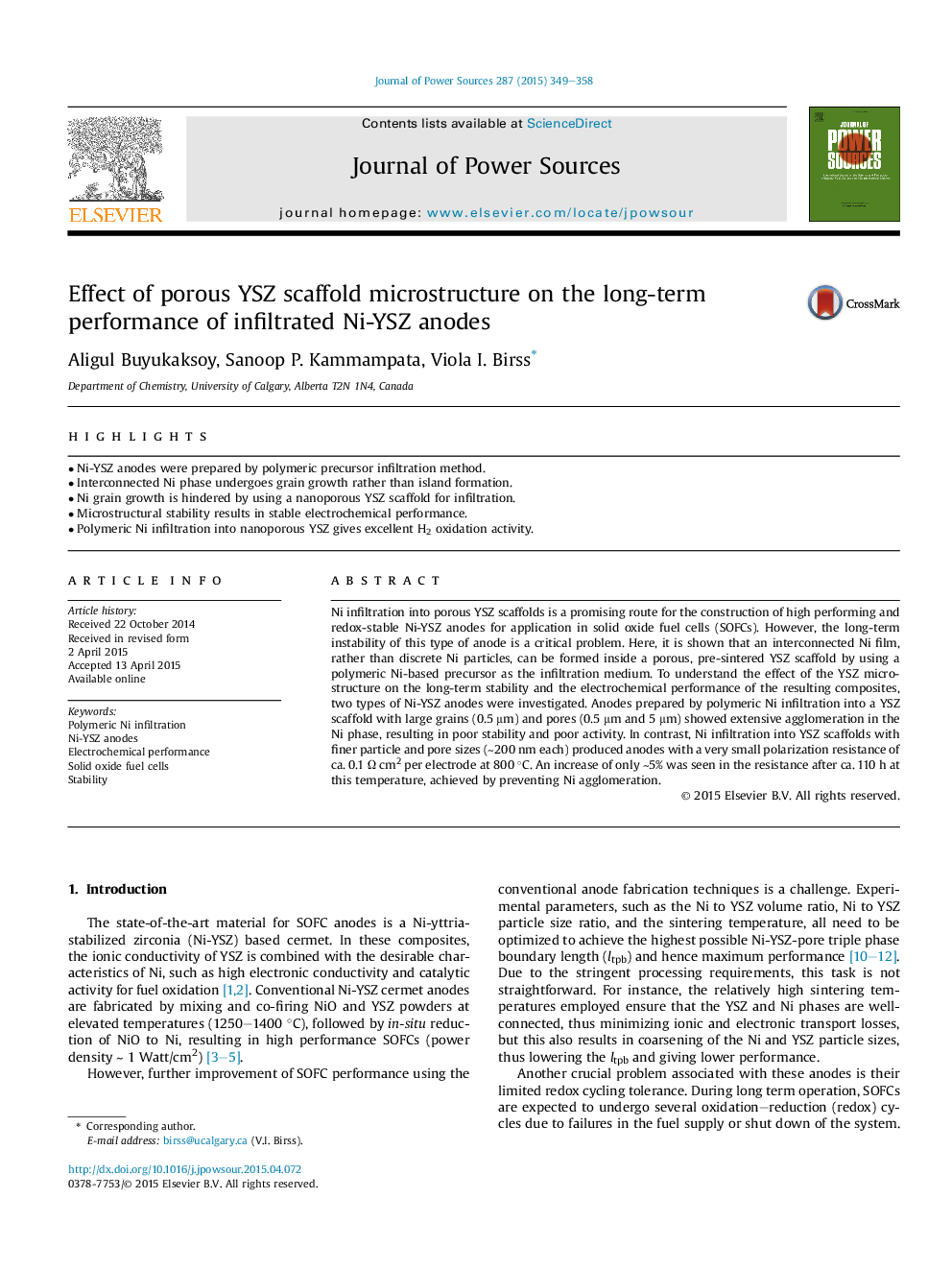| Article ID | Journal | Published Year | Pages | File Type |
|---|---|---|---|---|
| 7731989 | Journal of Power Sources | 2015 | 10 Pages |
Abstract
Ni infiltration into porous YSZ scaffolds is a promising route for the construction of high performing and redox-stable Ni-YSZ anodes for application in solid oxide fuel cells (SOFCs). However, the long-term instability of this type of anode is a critical problem. Here, it is shown that an interconnected Ni film, rather than discrete Ni particles, can be formed inside a porous, pre-sintered YSZ scaffold by using a polymeric Ni-based precursor as the infiltration medium. To understand the effect of the YSZ microstructure on the long-term stability and the electrochemical performance of the resulting composites, two types of Ni-YSZ anodes were investigated. Anodes prepared by polymeric Ni infiltration into a YSZ scaffold with large grains (0.5 μm) and pores (0.5 μm and 5 μm) showed extensive agglomeration in the Ni phase, resulting in poor stability and poor activity. In contrast, Ni infiltration into YSZ scaffolds with finer particle and pore sizes (â¼200 nm each) produced anodes with a very small polarization resistance of ca. 0.1 Ω cm2 per electrode at 800 °C. An increase of only â¼5% was seen in the resistance after ca. 110 h at this temperature, achieved by preventing Ni agglomeration.
Related Topics
Physical Sciences and Engineering
Chemistry
Electrochemistry
Authors
Aligul Buyukaksoy, Sanoop P. Kammampata, Viola I. Birss,
